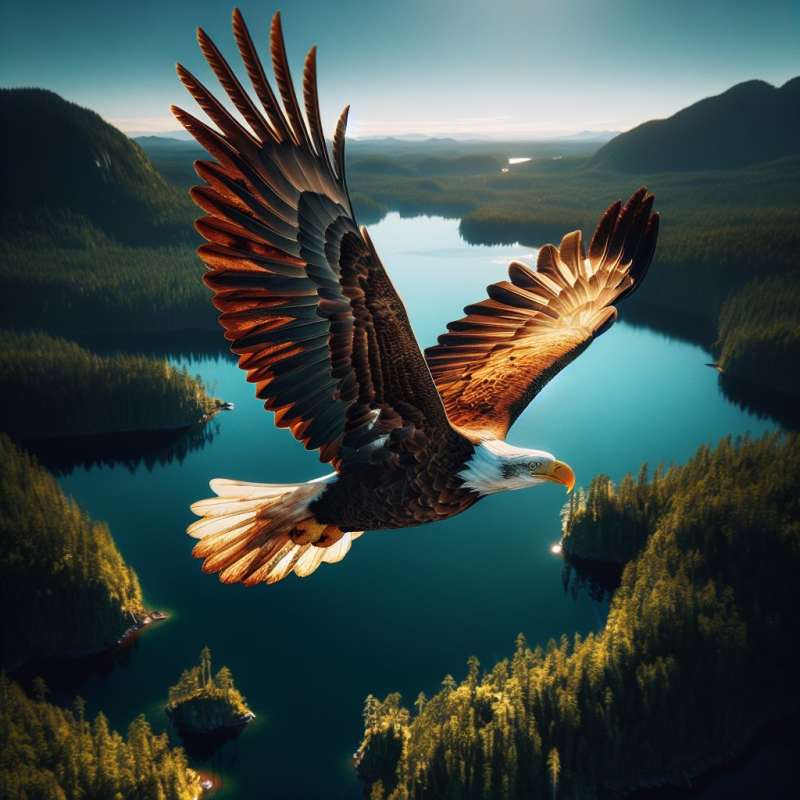
Bald Eagle Introduction
The Bald Eagle, America's national bird, is not actually bald. Its name derives from an old English word, 'balde,' meaning white. These majestic birds are known for their white head and tail feathers.
Impressive Wingspan
With a wingspan ranging from 6 to 8 feet, the Bald Eagle is one of North America's largest birds of prey. This impressive wingspan aids in their hunting prowess, allowing them to soar with ease.
Remarkable Vision
Bald Eagles have extraordinary vision, enabling them to see fish from several hundred feet above water. They have two foveae or centers of focus, that allow them to see both forward and to the side at the same time.
Symbol of Freedom
Chosen as the U.S. national emblem in 1782, the Bald Eagle symbolizes strength, freedom, and longevity. This choice was due in part to the bird's long life and majestic appearance.
Near Extinction Recovery
By the mid-20th century, Bald Eagles were on the brink of extinction in the contiguous U.S. due to hunting, habitat destruction, and DDT pesticide. Conservation efforts have successfully brought their populations back from endangerment.
Unique Nesting Habits
Bald Eagles build the largest nests of any North American bird. These structures, made primarily of sticks, can reach up to 13 feet deep, 8 feet wide, and weigh a staggering 1 ton.
Dietary Preferences
While primarily fish eaters, Bald Eagles are opportunistic feeders. Their diet is varied and includes waterfowl, small mammals, and carrion. Their powerful talons and beak make them adept hunters.Eagle Swimming Skill
Bald Eagles can swim! They use their wings like oars to row across the water if they catch a fish too heavy to carry.
What does 'balde' mean?
Lack of feathers
White coloration
Old age
Company